
Quadrangulo de las Monjas, Piramid del Adivino and the Palacio del
Gobernador from the Gran Piramide
We visited Uxmal and Kabah on an excursion from Merida.
Uxmal was a much more compact site than Chichen Itza, and much less crowded.
Uxmal is near the Puuc Hills, the only hills on the Yucatan peninsula
and water was collected from rainfall rather than from cenotes. For this
reason the rain god Chac was very important here, and masks of him are
everywhere.

Piramid del Adivino, the entrance on the steps is to Templo IV
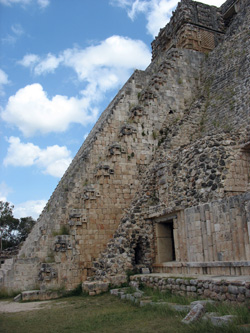
Masks of Chac flanking the stairway of the Piramid del Adivino
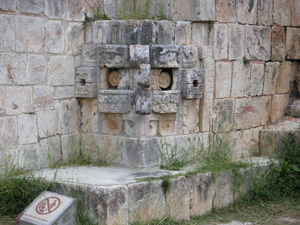
Mask of the rain god Chac
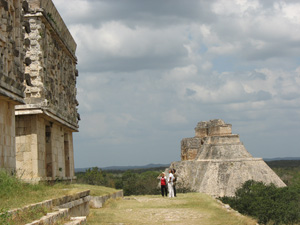
Piramid del Adivino from the Palacio del Gobernador
The Piramide del Adivino is unusual because it has an oval base. Some
people say this is because the archaeologists reconstructed it wrong.
Like most other Mayan Pyramids it was built over several other pyramids.
In this case four earlier structures have been found. Some of the earlier
temples are accessible, but the pyramid was closed when we were there.
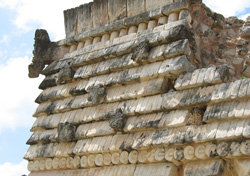
Bird reliefs on the outside of the house of the birds
The Quadrangulo de las Monjas consists of four buildings around a quadrangle,
each built on a different level. Each building is decorated in a different
style and represents a different level of the Mayan universe.
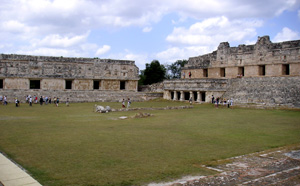
Inside the Quadrangulo de las Monjas. The west and north buildings.
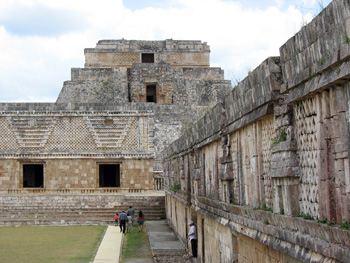
Inside the Quadrangulo de las Monjas. The Piramide del Adivino behind
the east building
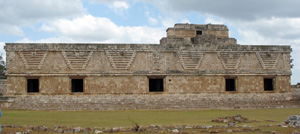
The east building of the Quadrangulo de las Monjas
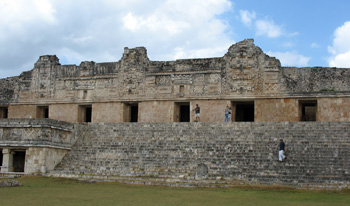
The north building of the Quadrangulo de las Monjas
The lattice style of decoration is typical of Uxmal. At Chichen Itza
the decoration carved into the building stone. At Uxmal the decoration
on the buildings was added afterwards as a veneer or mosaic.
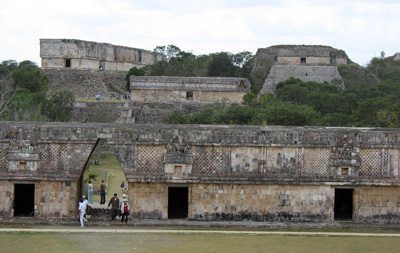
The Palacio del Gobernador and Gran Piramide behind the south building
of the Quadrangulo de las Monjas
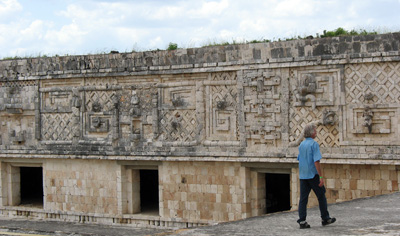
Decoration on the west building
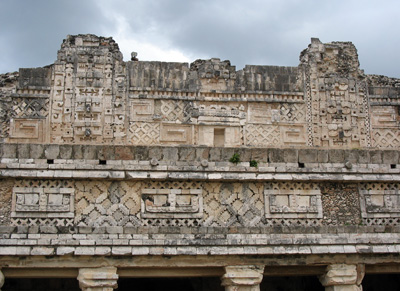
Decoration on the north building
The north building represents heaven, and has thirteen doors reflecting
the thirteen levels of heaven. The west building has seven doorways, (seven
is the mystical number of the earth) and represents the place where the
sun descends into the underworld.
The east building represents the place where the sun is reborn. The south
building has nine doorways. Xibalba, the Mayan underworld, has nine layers.
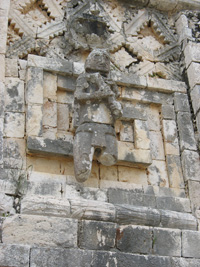
Figure on the west building
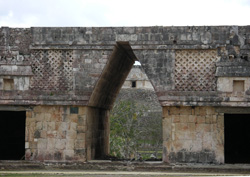
Entrance through the south building
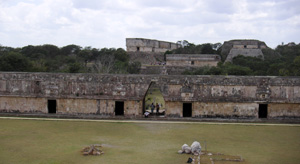
The south building with the Palacio del Gobernador and Gran Piramide
in the background
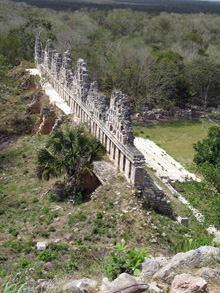
The roofcomb of El Palomar from the Gran Piramide
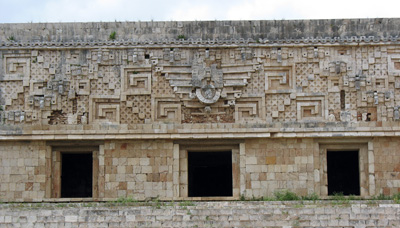
Facade of the Palacio de la Gobernador

Piramide del Adivino from Palacio de la Gobernador
After seeing Uxmal we went to the nearby site of Kabah. The main building
here is called the Codz Poop, or Palace of Masks, and is completely covered
on one side with masks of Chac.

Masks of Chac on the Codz Poop
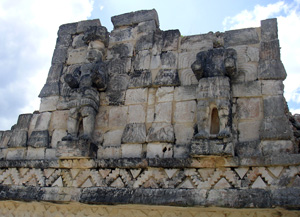
The other side of the Codz Poop has these two statues.
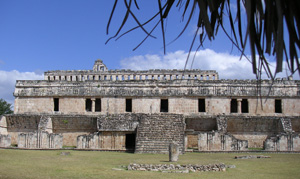
This building is next to Codz Poop
